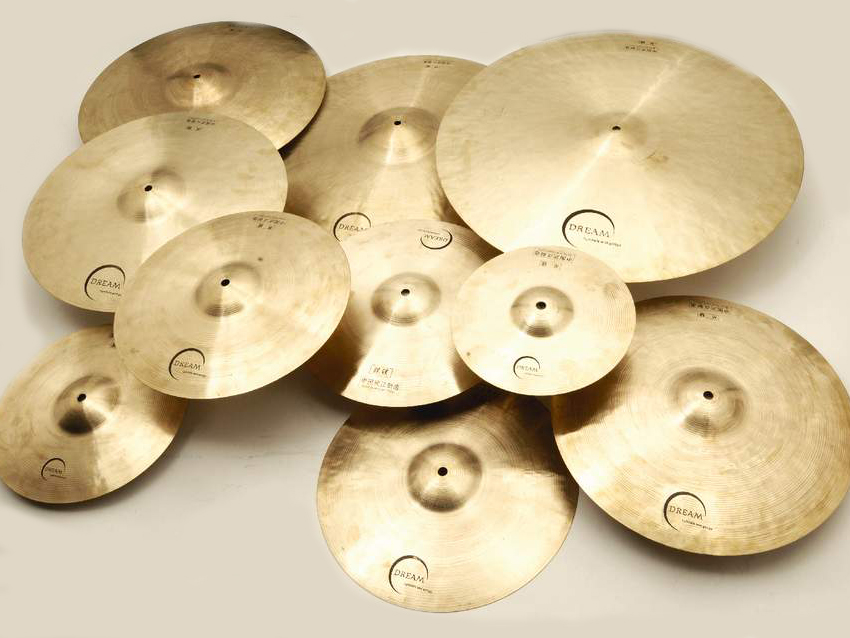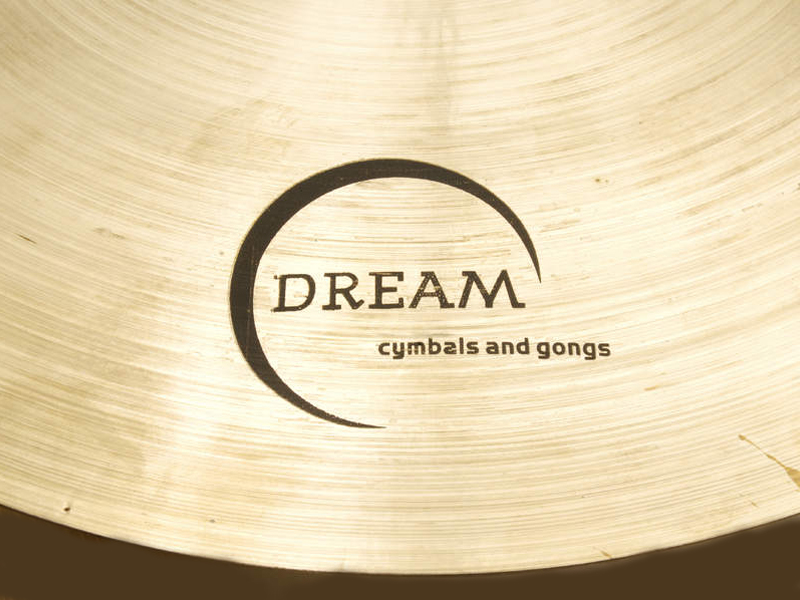MusicRadar Verdict
Every 20" ride will sound slightly different, so you need to choose with care, but that's the appeal, like rooting out a rare vintage instrument. Cymbals of class at budget prices.
Pros
- +
Hand-made cymbals of quality not quantity. Similar profile to classic A Zildjians.
Cons
- -
Some of the bells have quite a short sustain.
MusicRadar's got your back


Dream produce professional quality cymbals in the ancient Chinese cymbal-making region around Wuhan city. Dream's Contact series lies somewhere between the slightly darker, trashier Bliss series and the rockier Energy series.
Build
While the Dream Bliss and Energy series are made from traditional B20 bronze, the Contact series is, unusually, made from B23: 23 percent tin content and 77 percent copper. With such a high tin content the result is a lovely silvery-gold colouring and a slightly brighter stick response. The cymbals have a satin finish with Chinese-style graphics, and surfaces are lightly dimpled with barely discernible hammering, close-lathed top and bottom.
The Chinese have been making gongs in Wuhan for around 2000 years, so they know a thing or two. It's quite probable the Turks got their original know-how from China. These Dream cymbals show tiny marks and scratches from being entirely hand produced in less than super efficient, super clean modern factories. We're assured that "smelting, pouring, casting, shaping, hammering, final finishing and tone and pitch control are all done by men with hammers in their hands".
Hands On
If you're into heavy metal, you should maybe look away now - these cymbals won't deliver a face melting. The vibe is softer and mellower: a hint of China trashiness, a spicy tang and bell-like clarity. They need coaxing, not slaying. But while they're not clangers, they can certainly be played hard.
The 20" crash/ride is bone dry, whereas the 22" has much more wash. When crash-riding the 20", the crash erupts, full toned, then dries out quickly, getting right out of the way. The body that surrounds the clear dry stick response is dark and throaty. This is in contrast to the 22", which has a much bigger and broader surround-sound.
"The extraordinary thing is that crashing with a stick feels more like you've gone at it with a beater. The buildup is in slo-mo, soft as butter, unbelievably deep, and the sustain is forever".
This time when crash-riding, the explosion is colossal, lasting much longer than with the 20". The bell is also significantly bigger and louder, although sweet of tone. The 22" would be great in a big swing band, and the 20" tasty for small-group jazz.
The 24" Half Cup Ride is truly something else, one beast of a cymbal. With an ultra small (3") bell and vast, almost flat surface, it exhibits the super-crisp stick response of a flat ride, but beneath there's this humungous (though harmonious) zinging hum, like you've disturbed a horde of bees. Imagine a gong sound but without the feedback-like build-up. Despite this you can crash-ride and the ride carries on with total clarity.
The extraordinary thing is that crashing with a stick feels more like you've gone at it with a beater. The buildup is in slo-mo, soft as butter, unbelievably deep, and the sustain is forever. This is a cymbal like no other. At whom it's aimed we've no idea, but it's a killer.
The 14" hats possess the same soft warmth, which probably makes them too sedate for most rock. There's a lack of bite so they could get lost. Whereas we were happy to risk the 22" ride on a rocky gig, we didn't risk the hats. The pedalled sound is also understated, but half open, Ringo-style swishing is perfect - a frothy, sea spraying din. These are real old-fashioned 'sock' cymbals.
The rest of the set is more straightforward. The 16" and 18" are loosely described as crash-rides. Riding the 16" felt better than the 18", which is a nice enough crash, but a touch spongy. The 16" has the dryness of the 20" so works as a small, tinkly feature ride. The profile of these cymbals is similar to classic A Zildjians, and that's what they reminded us of.
The bells are quite prominent, giving the cymbals projection. Reasonable all-rounders, but not the longest sustain or the fattest harmonics.
With good body for its size, the 14" is definitely a crash rather than an over-large splash. The two splashes, 10" and 12", have a great 'tiss' factor. Being quite thin, they're quick and silvery; the 12" has more mass and plenty of presence while the 10" is just a little bit weak.
MusicRadar is the number one website for music-makers of all kinds, be they guitarists, drummers, keyboard players, DJs or producers...
- GEAR: We help musicians find the best gear with top-ranking gear round-ups and high-quality, authoritative reviews by a wide team of highly experienced experts.
- TIPS: We also provide tuition, from bite-sized tips to advanced work-outs and guidance from recognised musicians and stars.
- STARS: We talk to musicians and stars about their creative processes, and the nuts and bolts of their gear and technique. We give fans an insight into the craft of music-making that no other music website can.
“I used everything I knew about music”: How Green Day exceeded expectations with their most ambitious song
YouTube just added AI tools that makes musicians, library music and video editors redundant
“Every one of them said yes without hesitation": Hank Marvin and Roger Taylor have just remade a '60s classic for charity










